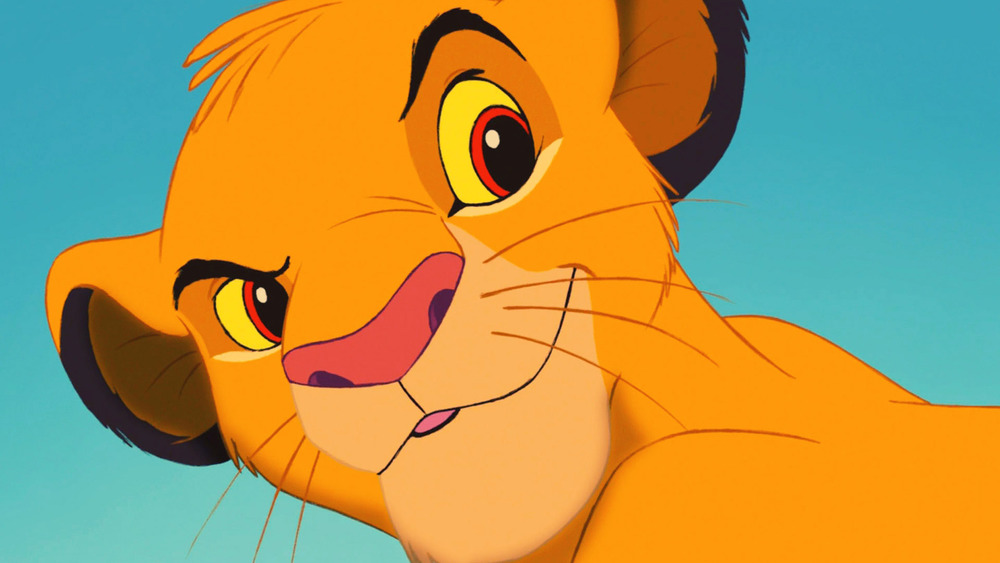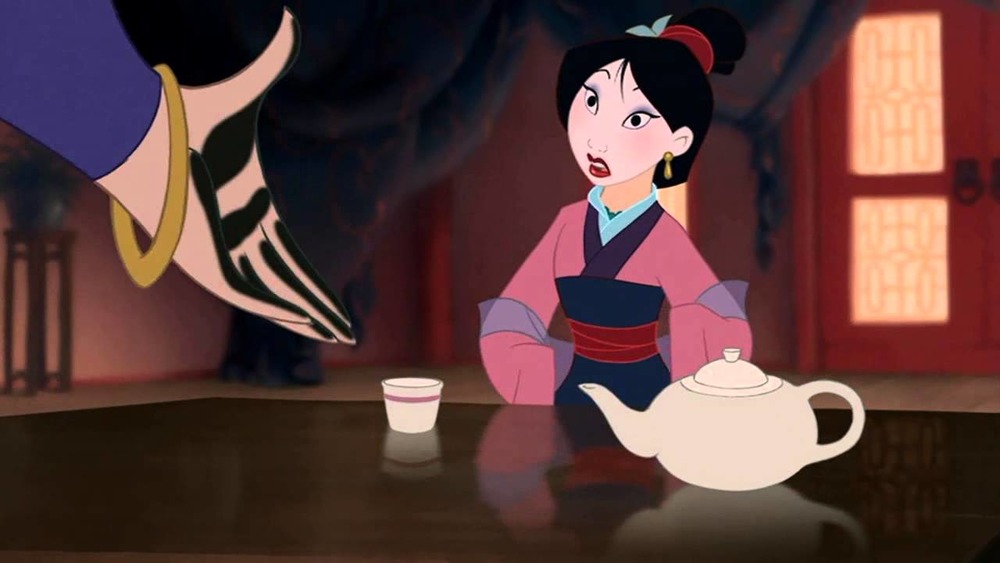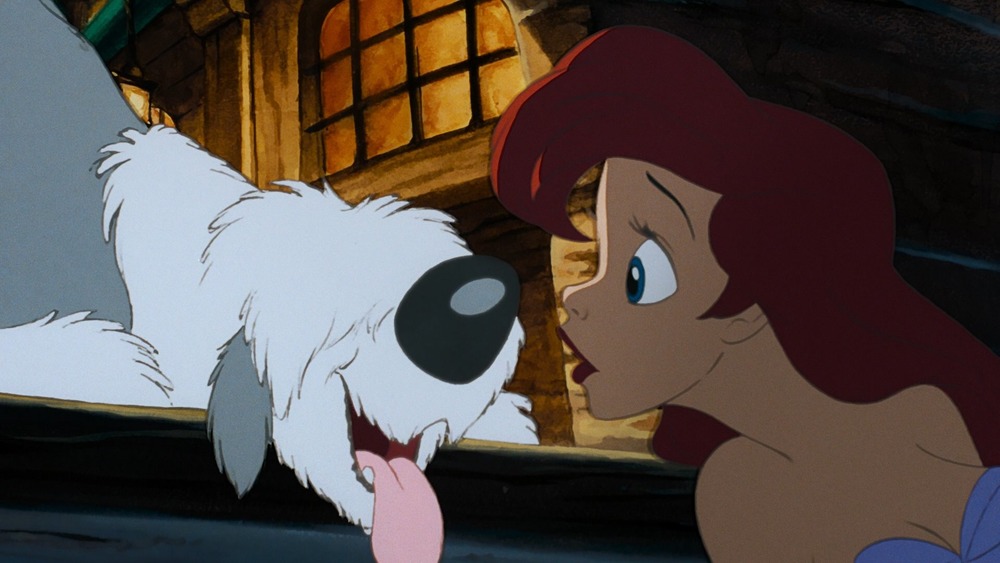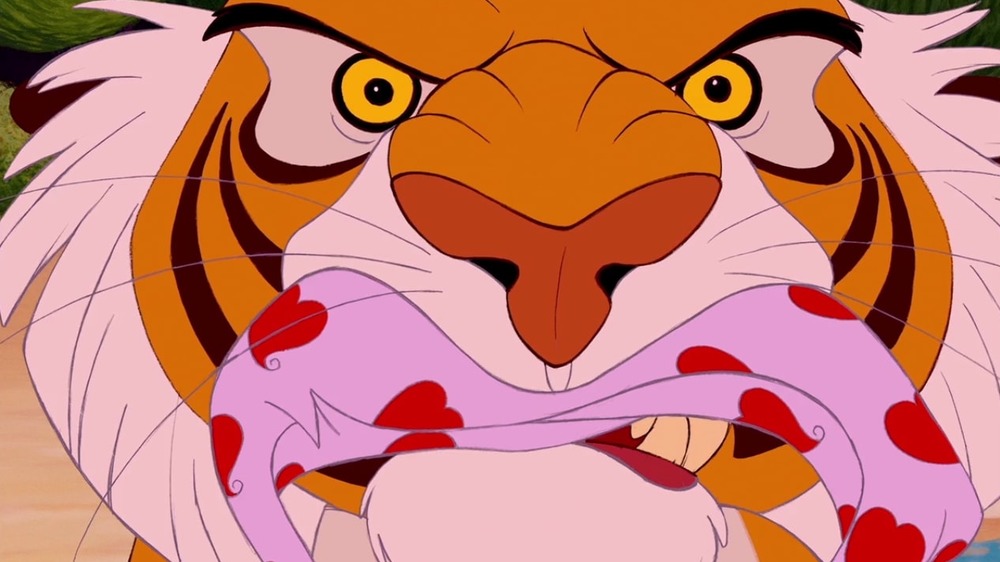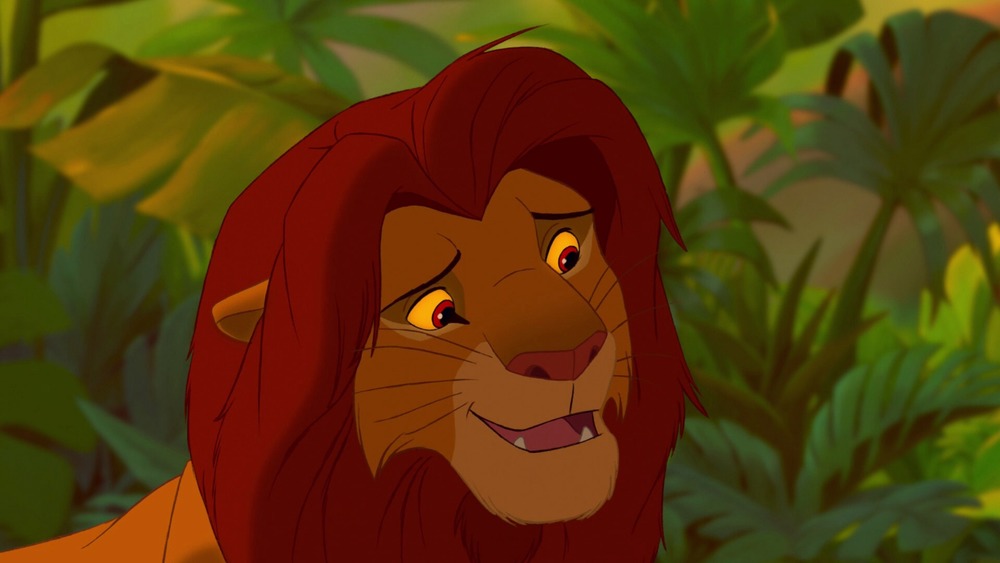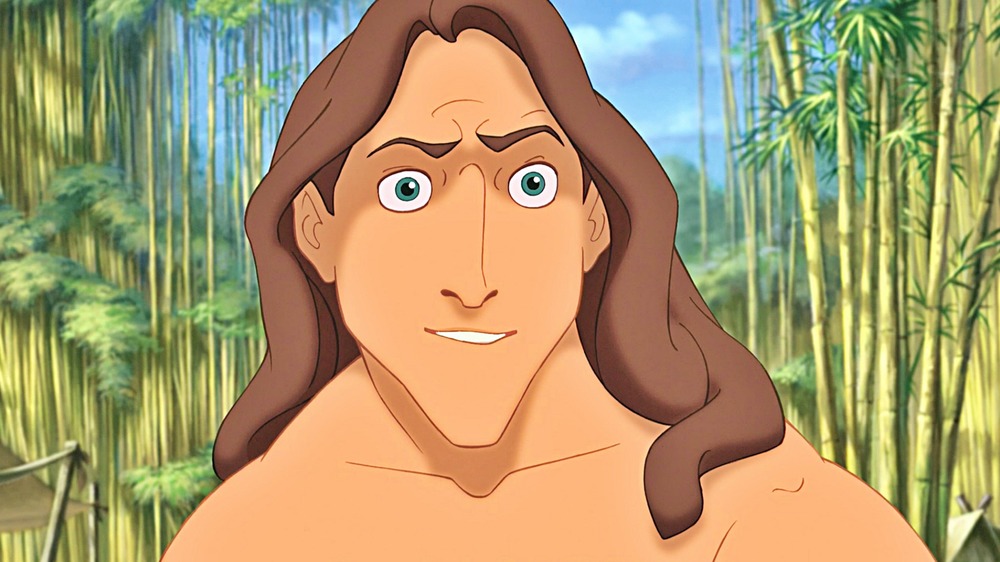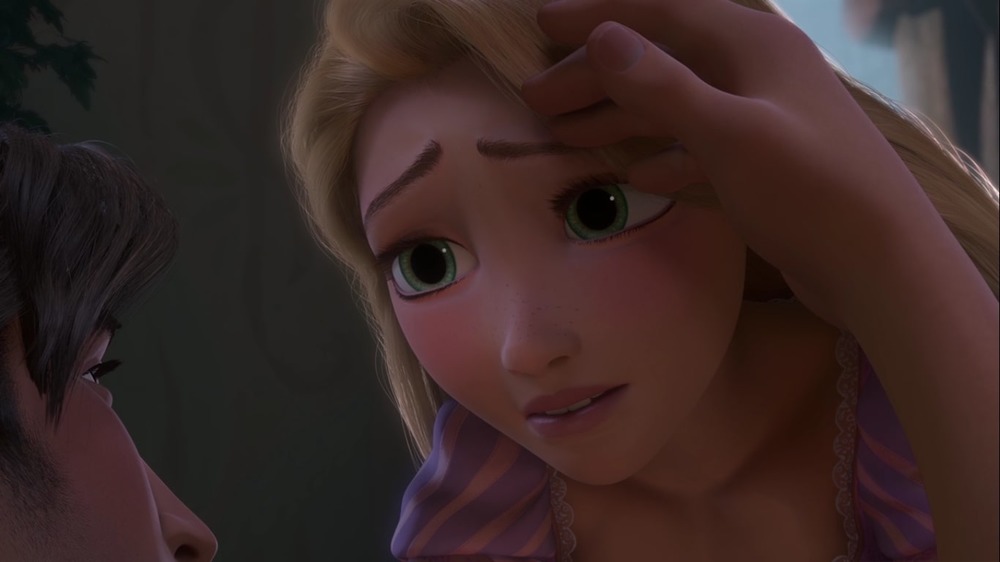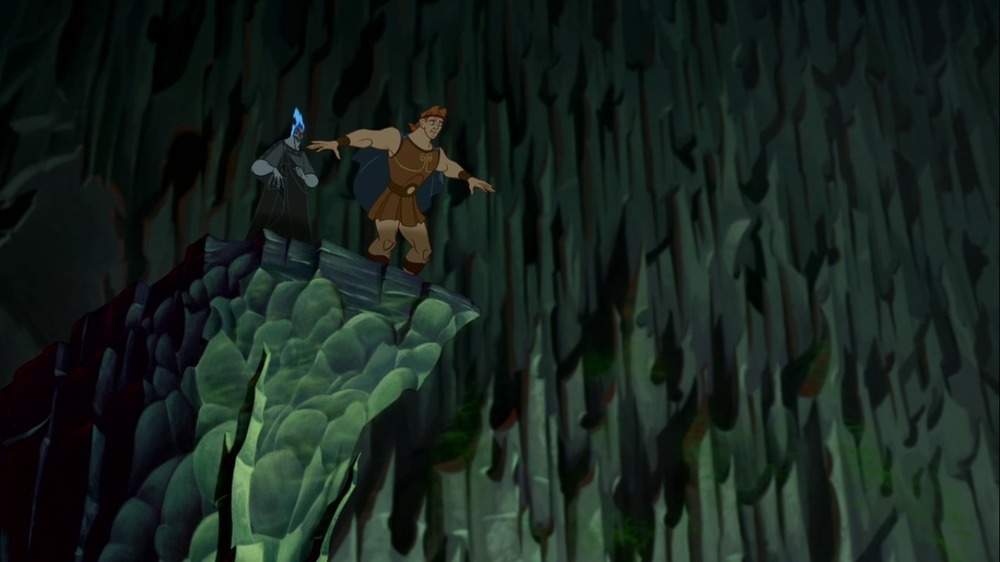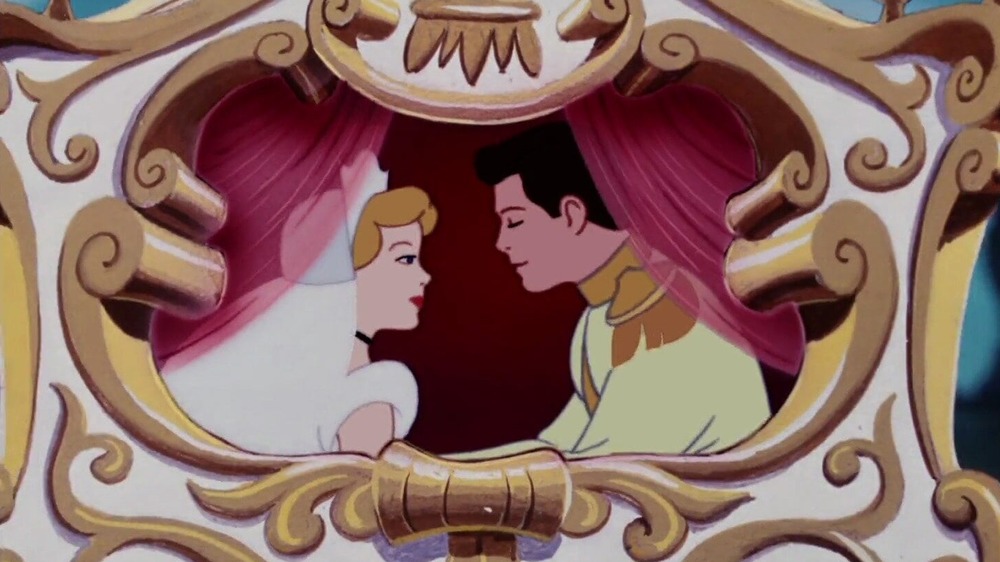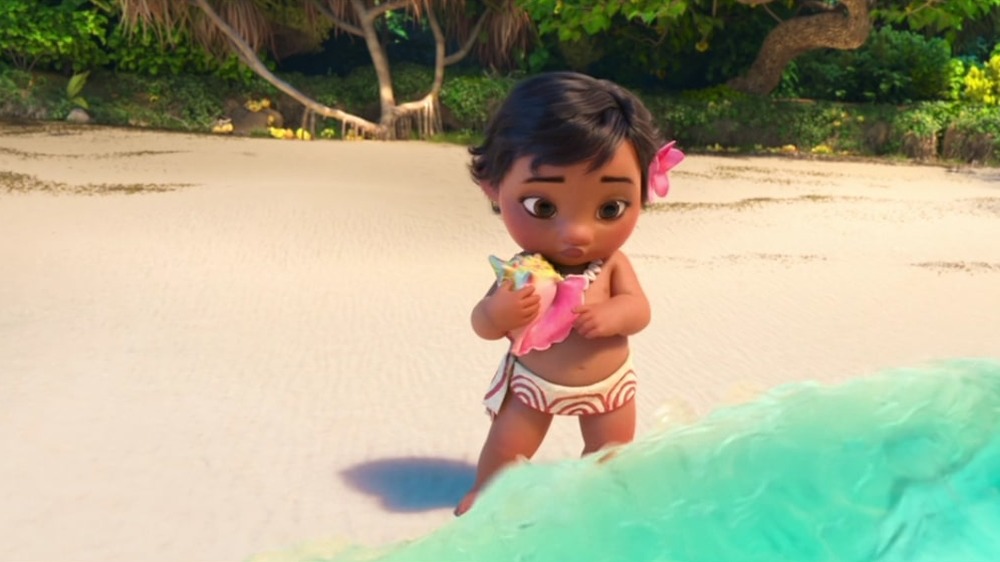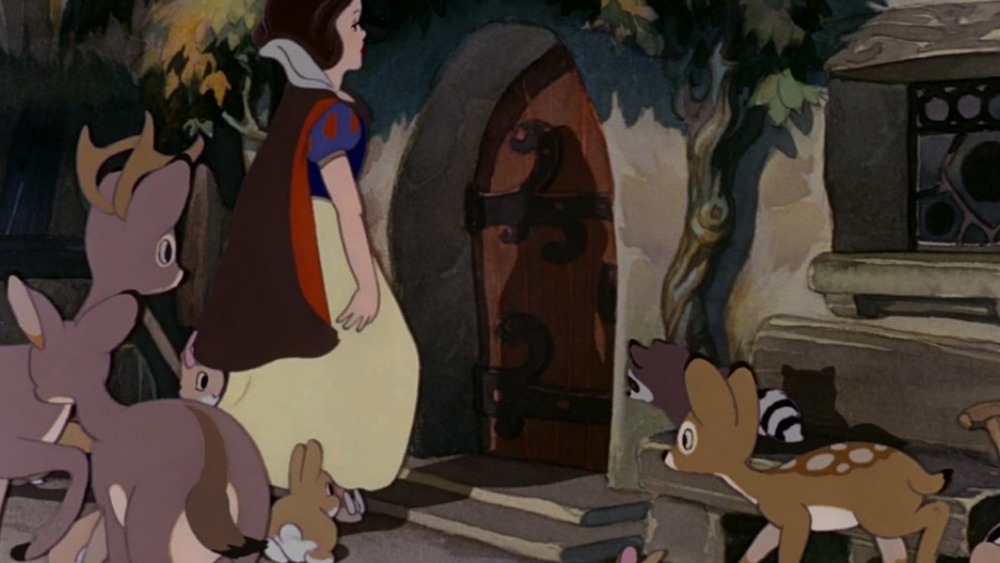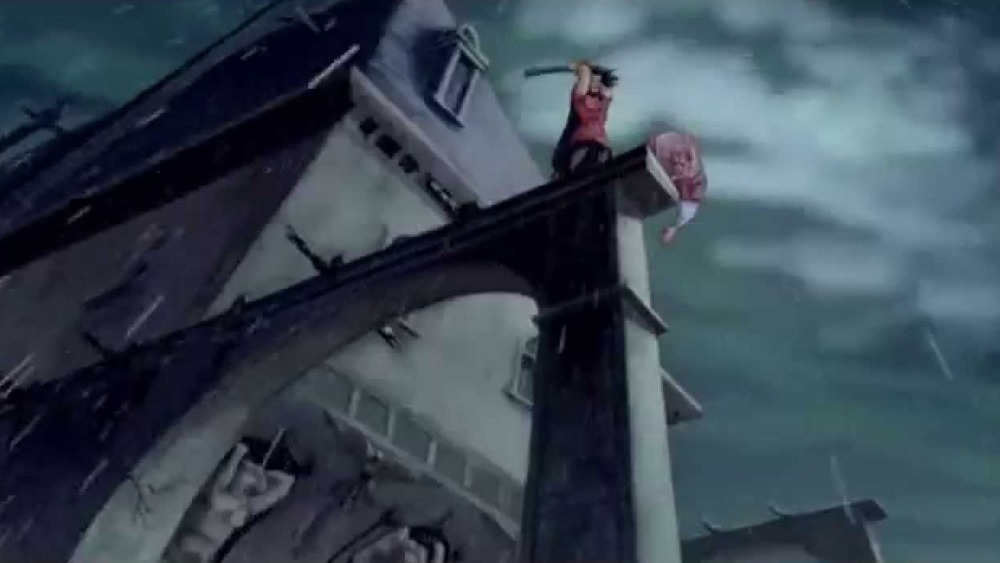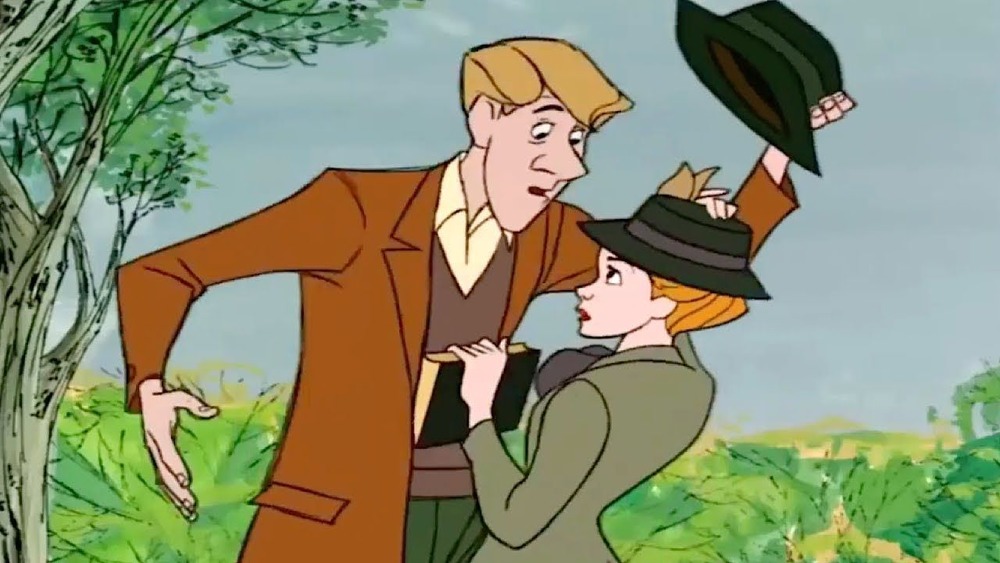Continuity Errors You Missed In Disney Animated Movies
Disney is a force to be reckoned with. Between big budgets, decades of experience, and a basically limitless pool of talent, the company has produced countless quality films and influenced the childhoods of millions all over the world. That's why it's so crazy to see mistakes in Disney films and wonder how, with all of their endless resources, could they possibly have missed that?
It's understandable, of course, because any film consists of so many moving parts that even the best of the best have pieces that fall through the cracks, particularly when it comes to continuity. Continuity errors can take many forms, like an empty glass becoming inexplicably full again between shots or a scar that seems to be on a different part of an actor's face in every scene. While many of these mistakes are subtle enough that they may be missed by a first-time viewer, they can be quite distracting once spotted, tugging at the viewer's suspension of disbelief. Instead of being absorbed in the story, a viewer starts to think, "Well, wait a second, how can that be..." Let's take a look at a few, shall we? These are the continuity errors you missed in Disney animated movies.
Mulan's matchmaker has ink disappear from her hands
With the release of Mulan in 1998, Disney flipped their own script, ditching the usual frilly dresses and love songs of Disney princess fame for an action-ready heroine prepared to save her family and, in the process, all of China. This movie was the first feature-length film produced by Walt Disney Feature Animation Florida, which was originally created as a satellite program to Disney's main Burbank Studio. Their hard work resulted in a fan-favorite film that has rightfully earned its place in the hearts of Disney animation lovers everywhere.
But no movie can be without fault, and Mulan's scene with the matchmaker is case in point. To refresh your memory, the matchmaker is testing Mulan, and like any struggling student, Mulan has a cheat sheet on her arm written in ink. At one point, the matchmaker grabs Mulan's arm, and the ink transfers to the matchmaker's hand. Comedy ensues, with the matchmaker unwittingly painting herself a goatee. However, immediately after, when the matchmaker grabs a teapot, the ink has miraculously disappeared. There is no trace of ink left on either hand or teapot.
The Little Mermaid wipes off the wrong cheek
In the 1980s, Disney was floundering, producing movies like Oliver & Company and The Black Cauldron – movies that may elicit nostalgia for some people nowadays but, at the time, were not garnering Disney much critical acclaim or financial success. Disney needed a hit, and they finally got one with The Little Mermaid, which ushered in the Disney Renaissance and brought on a decade of films that revitalized the studio.
There's a lot about The Little Mermaid that deserves celebration, but alas, like any human endeavor, they couldn't get everything right. In one scene, Ariel is spying on a ship full of sailors, watching them dance. She's spotted by Prince Eric's dog, who comes over to lick her right cheek. However, in the next shot, she is shown rubbing her left cheek, as though that was the one the dog kissed. Guess Ariel doesn't take germs too seriously.
Aladdin swaps pants for underwear
Aladdin as a film has so much going in its favor — a memorable soundtrack (who can help but tap their toes to "Friend Like Me" or sing along with "A Whole New World?"), exciting action, and, of course, the unforgettable and undeniable perfection of Robin Williams' performance as the Genie.
At the beginning of the film, we meet princess Jasmine, who is displeased to have yet another suitor brought to the palace — she would rather marry for love. Jasmine's lovable pet tiger, Rajah, decides to send the suitor a pointed message by taking a nice bite out of the prince's pants. We're clearly shown the prince stomping off in a huff, his purple pants ripped to reveal classic heart-patterned boxers. However, when we see Rajah, it's not purple pants in the tiger's fierce jaws, as it should be. Instead, Rajah is holding a piece of the heart-patterned boxers. While that image does have more comedic appeal, it doesn't jibe with what the audience just saw on the screen.
The Lion King changes Simba's eye color
1994's The Lion King is one of the highest-grossing hand-drawn animated features of all time, making over $986 million. It's no wonder that The Lion King had such strong appeal to audiences, because the film pulled inspiration from two heavyweight sources. To quote screenwriter Irene Mecchi, "Before I came on board, it was described as Bambi in Africa with Hamlet thrown in. So, Bamblet."
Throughout the movie, the whites of Simba's eyes change from white to yellow frequently. As a cub, the whites of Simba's eyes are yellow, which lasts until the scene where an adult Simba is stargazing with Timon and Pumbaa. After this point in the movie, the color of his eyes will change back and forth. While some people may point out that lighting can influence eye color, one pivotal scene shows the inconsistency is not an artistic decision. When Simba is talking to his father Mufasa in the sky, he says, "How can I go back? I'm not who I used to be." Eagle-eyed viewers will note that Simba's eyes switch from yellow to white to yellow again in three frames. Blink and you'll miss it, but it's there.
A Tarzan fight scene features wounds that heal instantly
The film that can turn any man into a Phil Collins fan, Tarzan was a box office hit at the time and is fondly remembered by many for its soundtrack, which won Disney an Academy Award for Best Original Song with "You'll Be in My Heart."
As a film designed to be viewed by children, Tarzan had a careful line to walk when depicting violence, needing to portray the harsh realities of jungle life while maintaining a Disney-appropriate lack of gore. While the main villain of the film is Clayton, a human hunter, the film finds a secondary foe in Sabor, a vicious leopard responsible for the deaths of Tarzan's parents and a menace to the gorilla community. In a dramatic fight scene, Sabor first takes on Kerchak the gorilla, whose chest is slashed by Sabor's fierce claws. The wound is forgotten in a moment, though. In the next shot, the wound completely disappears and there is no blood to be found.
Tarzan's toe-to-toe with Sabor maintains a bit more realism, as Sabor's claws leave bright red lines across Tarzan's chest during their fight. But when Tarzan emerges from the fight exhausted but triumphant, the scratches are miraculously gone. This suggests the animators were willing to include some small suggestion of violence in a kid's movie, but they weren't going to push the envelope too far.
Flynn Rider from Tangled is shackled and unshackled at the same time
2010's Tangled, while perhaps dwarfed in popularity now by modern mega hit Frozen, is nevertheless an enjoyable film. Due to animation challenges, notably Rapunzel's hair and the unique artistic style which blended CGI and traditional animation, the film spent more than six years in development and is reported to have cost Disney more than $260 million to produce, potentially making it the most expensive animated film of all time.
However, money can't purchase perfection, and one oft-cited continuity error happens in the movie's climactic scene. Rapunzel has discovered her true identity as the kingdom's princess, but Mother Gothel intends to continue keeping Rapunzel a prisoner. Flynn Rider, our romantic lead, tries to stage an escape but is wounded in the process. Gothel decides to allow Rapunzel to heal him before they leave but shackles him so that he can't follow them. The lovebirds talk, and when Flynn reaches up to brush hair out of Rapunzel's face during their conversation, the closeup shot shows all the way to his forearm. There is no shackle in sight. In the next wide shot, the shackle returns. Since Flynn being confined is such an important part of the story at that moment, it's surprising that this detail was forgotten.
A cliff in Hercules changes height
With a soundtrack meant to sing along to, a unique animation style, and a cast of lovable characters, Hercules is a film fondly remembered by many alongside the rest of Disney's films from the '90s. 1995's Pocahontas and 1996's The Hunchback of Notre Dame had received criticism for being too dark for children's movies, so Hercules, released in 1997, was meant to be a more lighthearted story. Despite pulling from sometimes strange and dark source material, Hercules nailed its humor, bringing us the hilarious villain Hades, his foolish sidekicks Pain and Panic, and subtle nods to other elements of Greek mythology.
In a scene near the end of the movie, our hero Hercules sees the ghostly form of his love interest, Meg, floating in the river of death. It's here that we see our continuity error. Hercules is shown to reach down and easily touch the top of the water. However, moments later when he decides to jump in and save her, he is shown diving from a great height. While it's certainly more dramatic than simply stepping into the river, it doesn't match up with what the audience just saw.
Cinderella has two different wedding gowns
Cinderella, released in 1950, has become almost as synonymous with Disney as Mickey Mouse. In fact, Cinderella's castle has become an icon of the Disney company. The castle features in the production logo shown before any of their other movies, and large-scale, real-world installations of the castle are a part of the quintessential Disney aesthetic at both the Magic Kingdom in Walt Disney World Florida and Disneyland Tokyo. Furthermore, although Snow White technically precedes Cinderella as the first official Disney princess, Cinderella is perhaps even more famous for so perfectly fitting and defining the archetype.
For these and many more reasons, the film holds a special place, even among other Disney movies, but it's not immune to mistakes. In the movie's final scene, after her wedding celebration with Prince Charming, viewers will observe Cinderella suddenly change outfits. When we first see her, she is very clearly wearing a long-sleeved gown. However, in the final shot when the newlyweds lean in for a kiss in their carriage, Cinderella's gown has short sleeves.
Baby Moana is surrounded by disappearing objects
Moana is one of Disney's most beloved recent films, with a soundtrack cowritten by Lin-Manuel Miranda, the brains behind Hamilton and who will also play a role in the music for the live-action remake of The Little Mermaid, set to be released in November 2021.
The movie spends time emphasizing the deep connection between the character Moana and the sea. The film underscores this by showing us baby Moana having a special interaction with the ocean, but this short scene sports several continuity errors. For example, Moana guides a baby sea turtle into the ocean by using a large, green leaf. Afterward, she drops the leaf on the ground behind her. She takes a few steps forward, and when we see a reverse angle of the scene, the leaf has disappeared. Another continuity error soon follows. Moments later, a flopping fish leaves an impression on the sand, but when the angle of the scene changes, the fish's marks in the sand are gone.
Snow White features a staircase that is redesigned instantly
Snow White and the Seven Dwarfs was Disney's first full-length animated feature, and it was quite a gamble for the studio at the time of its production. Walt Disney mortgaged his own house to help fund the project. As we all know now, Disney's wager paid off, as Snow White cemented the studio's place as a frontrunner in animation.
Being the studio's first feature animation, it's natural that there would be a hiccup or two along the way. Particularly, if you pay attention to details in the background, you'll notice a number of subtle changes. One such change is in the design of the dwarfs' home. At one point, we see the dwarf Doc leave the house, and there are very clearly two steps to the front door, but in the next shot, there is only one. Another example is how the number of steps varies throughout the film, changing between one, two, and even three steps.
Watch closely, and you'll also see dressers and windows appear by the beds where, the last time we saw them, the space was bare. You'll also spot a door handle that is pulled off, only to suddenly reappear. On top of all that, the design of the front windows occasionally changes. Sounds like the dwarfs' home is as bad as Hogwarts with its moving staircases!
Beauty and the Beast's climactic fight scene has a balcony switcheroo
With an endearing cast of characters, an infectious soundtrack, top-notch animation, and a touching romantic story, Beauty and the Beast won the hearts of both critics and viewers. Beauty and the Beast made history in 1992, where, among other wins and nominations, the movie remarkably became the first animated film to be nominated for Best Picture. It also did well in the Best Original Song category, as three of its five songs were nominated, and its title song ultimately won the category.
Despite its imposing résumé, the film has its share of mistakes as well. There are plot holes (some of which the 2017 live-action remake tried to patch up) and, of course, continuity errors. It's hardly surprising, given that Beauty and the Beast used quite a lot of different locations over the course of the film. One such error, hardly noticeable except to the most keen-eyed viewer, occurs during the final fight between Gaston and the Beast. After being stabbed, the Beast falls and lands on the edge of a rounded balcony. When the angle changes, the Beast is suddenly in the middle of a long, rectangular structure.
Roger from 101 Dalmatians forgets a hat and then wears it later
1961's 101 Dalmatians had a perfect formula: an unforgettable villain (set to get her own movie, Cruella, in May 2021) and a passel of precious puppies. The animators of the film had a mammoth task when you stop to think about it — they had to hand-draw every spot on those dogs in every scene. By Disney's own count, the animators had to draw a whopping total of 6,469,952 spots. Fortunately, the animators did catch a break, as the film was the first feature to use Xerox technology, saving both time and money for the company and lending the film its scratchy aesthetic.
With so much on their plates, it's no wonder that a detail or two fell through the cracks. The premise of the opening of the film is that Pongo, a Dalmatian, is tired of the bachelor life that he and his owner Roger are leading. One day at the park, Roger is walking Pongo and pauses to rest on a bench, setting down his hat. Seeing an attractive woman up ahead, Pongo tugs Roger forward, leaving Roger's hat visibly left behind on the bench. In the next shot, after Pongo has successfully entwined the two humans in his leash, we see Roger's hat on his head again. We're not sure how Roger managed to pull off that trick, but we wish our forgotten items would suddenly reappear when we need them, too.
